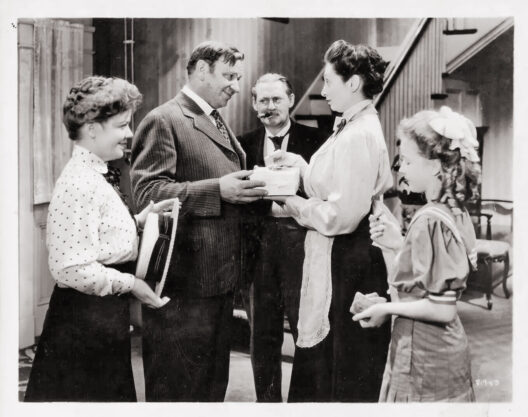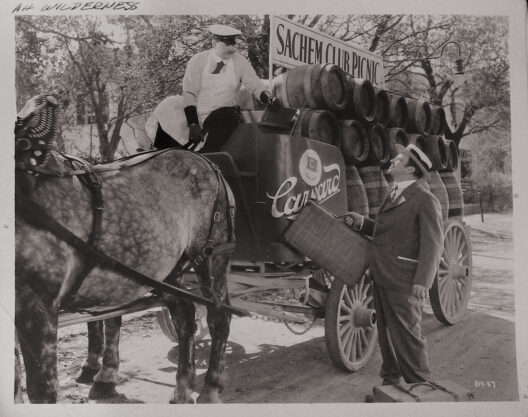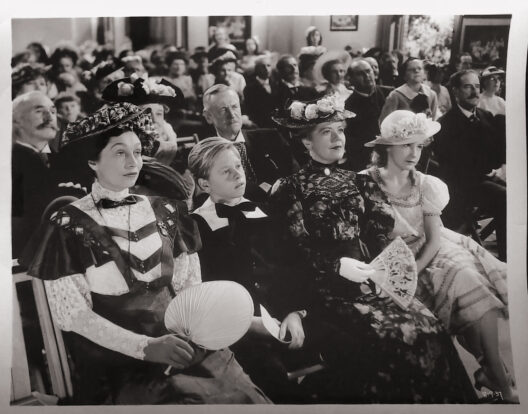I’ve at last been able to see the U.S. movie Ah, Wilderness!, 1935’s gentle celebration of the small-town world of America as it was in 1906. Lovecraft saw it late in life (circa Christmas 1935/36) and revelled in its lavish layers of thirty-years-ago nostalgia. Similar to a movie of today being nostalgic for 1994, or one of the 2010s being nostalgic for 1980.
saw “Ah, Wilderness”, which made me home-sick for the vanish’d world of 1906!
“… revelled in it. Yuggoth, but it made me homesick for 1906! [it] gives all sorts of typical 1906 glimpses, including an old street-car, a primitive steam automobile, &c. It was photographed in Grafton, Mass. […] where the passing years have left little visible toll.
“At times I could well believe that the past had come back, & that the last 3 decades were a bad dream. [the world it depicted] having many a value which might well have been preserved had social evolution been less violently accelerated by the war.”
I recall that Lovecraft also remarked that the family sitting room was almost a double for the one he had known as a boy. Also the hallway.
He also seems to imply that the rural newspaper office which published his astronomy articles, was in appearance similar to the office briefly seen in the movie (the young hero’s father owns the town newspaper).
the articles landed, & I also landed others with a rural weekly …. (this was the Ah, Wilderness year of ’06)
Ah, Wilderness! is very well-made and acted, with lavish costumes and scenes. Worth seeing simply for the very satisfying scene of a steam-car ‘scaring the horses’. But (unless I’m missing something, being British) it is perhaps not the all-time classic that some had claimed. Though, as the 1933 play, it does appear to have become a staple of American repertory theatre.
The film usefully gives one a better feel for Lovecraft’s formative environment and sensibilities. Many of us have been subtly trained by agitprop to casually think of the Victorian and Edwardian periods in bleak b&w Dickensian terms, all grimy urchins, grim school-masters, and grinding urban poverty. The movie is a useful corrective. As with the 1930s, the view of which has been similarly be-grimed for political purposes, most people were actually ‘getting on with getting on’, and rather enjoying the novelty of becoming middle-class.
The cynical young hero is somewhat Lovecraft-like, at least in the early scenes. The concerns of creeping socialism and chronic alcoholism, though treated lightly, are the same ones which permeated young Lovecraft’s world. The hero (Eric Linden), at first a ‘going to Yale’ stiff of a teenager, is perhaps the weakest part of the film and perhaps a little too ‘1930s movie star’ in appearance — this makes it harder for the viewer to suspend disbelief. His youngest brother is the firecracker Mickey Rooney. But the young Rooney’s usual gurning and capering is thankfully kept on a very tight leash, in what must be one of his first film appearances.
Even having seen Ah, Wilderness!, I’m still as a loss as to why the strange title was chosen. No-one gets to look at a sweeping vista and proclaim the words, unless I missed something. I would have called it “Bang goes the Fourth!”, since it’s set on the 4th July.
For another Hollywood view of 1906, this time from the post-war 1940s, I’ve found Ah, Wilderness! also inspired the glossy musical adaptation Summer Holiday (1948).




